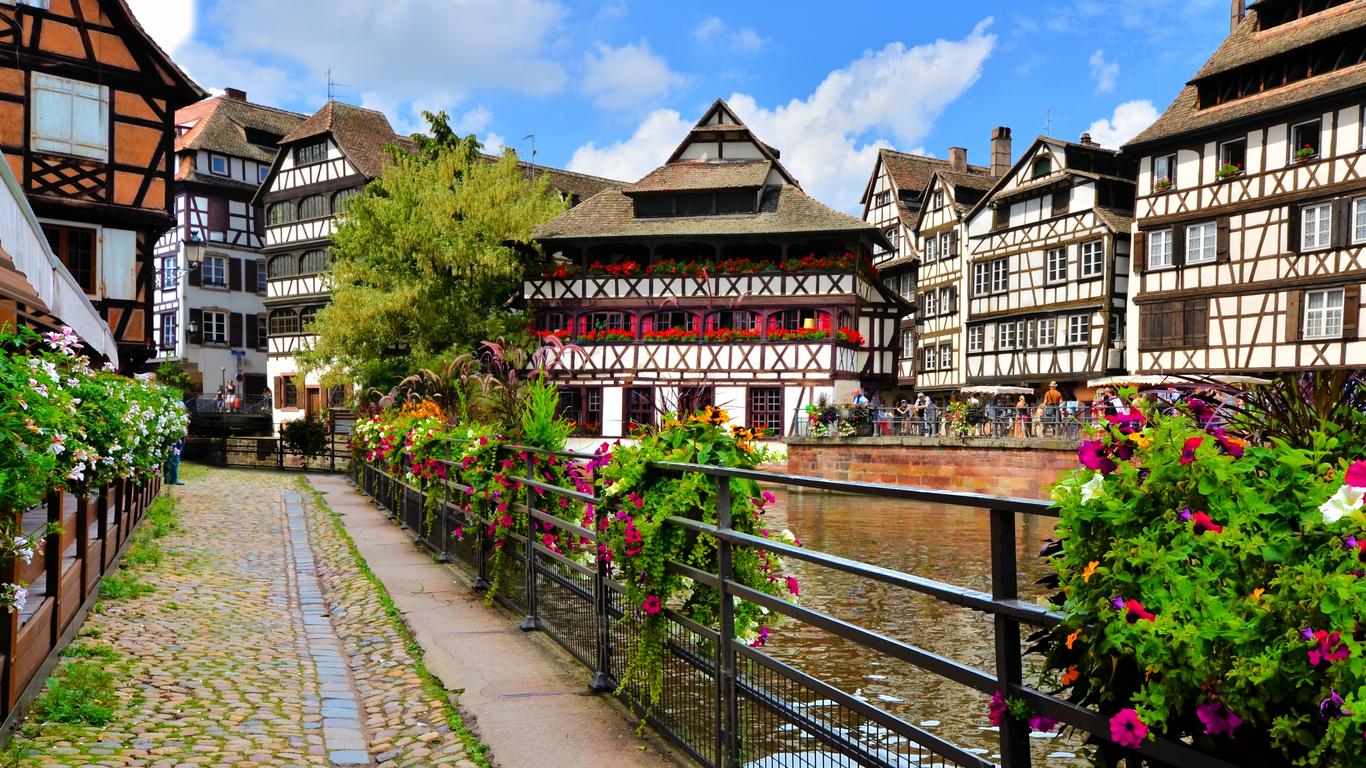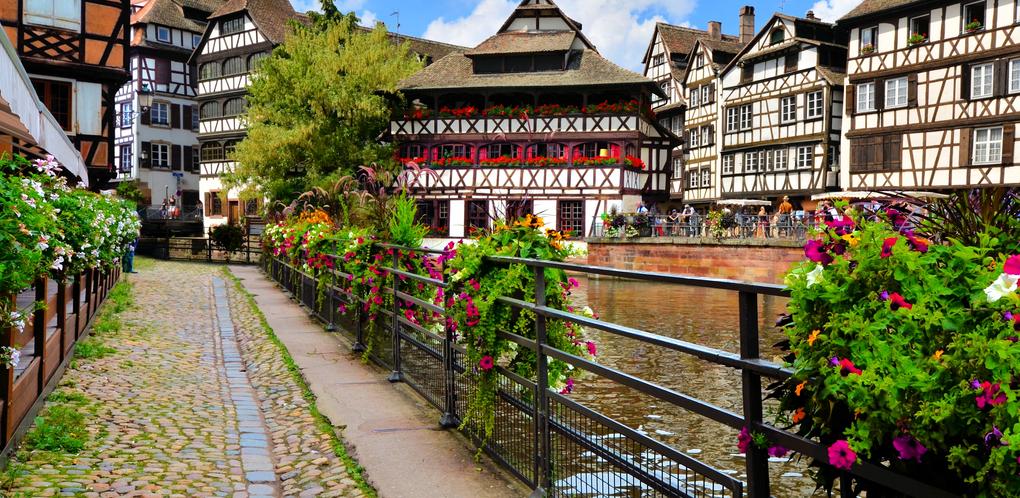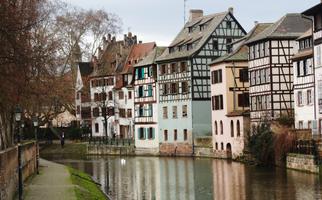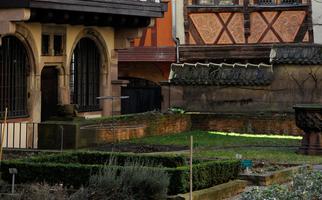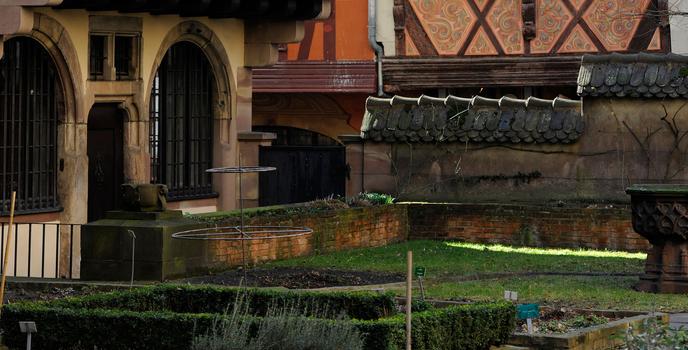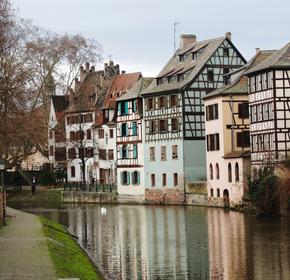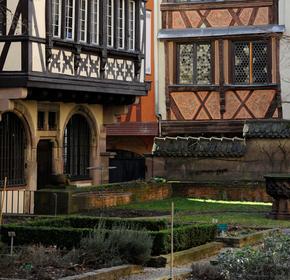1. Cathédrale Notre-Dame de Strasbourg: Romanesque Meets Gothic
The Cathedral of Our Lady of Strasbourg or Cathédrale Notre-Dame de Strasbourg, a Roman Catholic church, is a renowned example of Romanesque and Gothic architecture. The structure stands at 466 feet high and was the tallest building in the world from 1647 to 1874. The cathedral was built from sandstone extracted from the Vosges Mountains, which gives the building a pleasant pink hue. The church features 12th- to 14th-century stained glass, a baptismal font designed by Jost Dotzinger in 1443, a pulpit created by Hans Hammer in 1486, life-sized sculptures depicting Christ on the Mount of Olives, and the Life of Mary tapestries designed in the seventeenth century.
2. Petite-France: Explore the Canals
Petite France, a historic quarter of Strasbourg in the center of the city, is a UNESCO World Heritage Site. The area is divided into several channels by the River Ill. Upstream, visitors will find Barrage Vauban, a 17th-century fortress. The Ponts Couverts, an 18th-century fortification with three bridges and four towers, lies downstream. In the center of the quarter, the Pont du Faisan, a swing bridge, is used by passenger boats. The Maison des Tanneurs, on the north bank, is home to the Tanner's Guild and Place Benjamin-Zix, which leads to the Rue des Dentelles, the Rue du Bain-aux-Plantes, and the Saint-Thomas church.
3. Église Saint-Thomas: Monument to History
The Église Saint-Thomas, five-naved hall church, began construction in 1196. The interior features a late-Gothic cupola, a gallery to the left, and chapels at both sides of the apse. The main Lutheran church in Strasbourg, it is the only hall church in Alsace. Located on the Route Romane d'Alsace, the building has been classified as a historical monument by the French Ministry of Culture since 1862. Highlights include A 1741 Silbermann organ played by Mozart in 1778, the sarcophagus of Bishop Adelochus - which dates back to 1130, the mausoleum of Marshall Maurice de Saxe, and the tombstone of Nikolaus Roeder von Tiersberg from 1510.
4. Parlement Européen: Modern Day Amphitheater
The Parlement Européen consists of five buildings, located in the Quartier Européen of Strasbourg. The main structure, the Louise Weiss building, which houses the hemicycle for plenary sessions, was dedicated in 1999 at the intersection of the Ill and the Marne-Rhine Canal. The building, inspired by the Roman amphitheaters, features a 200-foot tower. The secondary structures include the Winston Churchill building in the Orangerie district, the Salvador de Madariaga building on the Quai du Bassin, the heart-shaped Pierre Pflimlin building, and the Václav Havel building, which was originally opened in 1954 and reconstructed by the Parliament in 2012.
5. Musée de l’Œuvre Notre-Dame: Art of the Rhine
The Musée de l'Œuvre Notre-Dame features decorative and fine arts from the Upper Rhine that date from the Middle Ages to 1681. Renowned for its original sculptures, stained glass windows, and architectural fragments of the Strasbourg Cathedral, the museum contains such esteemed masterpieces as the Ecclesia and Synagoga statues from Notre-Dame de Strasbourg, a self-portrait by Nikolaus Gerhaert, the Holy Monk sculpture by Hans Wydyz, and the Saints Catherine and Mary Magdalene painting by Konrad Witz.
